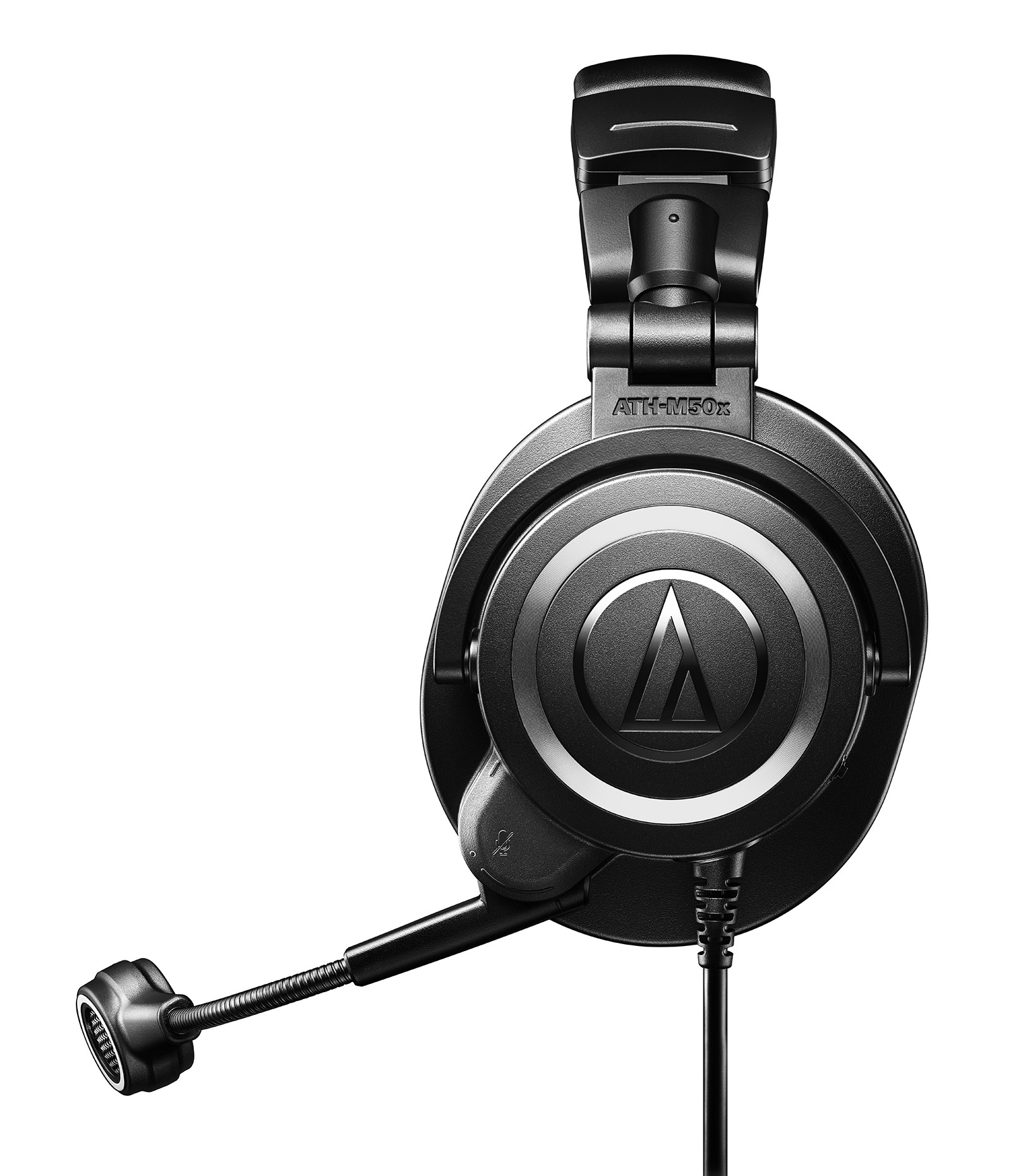
During my podcasting days, the Audio-Technica AT2020 USB microphone was one of my go-to choices. So, earlier this year, when the company introduced its ATH-M50xSTS StreamSet headsets, which were specifically designed for streaming production and incorporate technology from its 20 Series mics, I was excited to give them a try.
[LISTEN to this review recorded with the StreamSet here.]
Audio-Technica sent me the USB version of the StreamSet to review. It has an integrated, 6.5-foot cord with a USB-A plug and ships with a USB-C adapter, so you have connectivity options. Another version, the ATH-M50xSTS, offers analog connectivity with an XLR mic output and 1/4-inch headphone input (with 1/8-inch adapter).
[Hear, Hear: The Evolution of Podcasting]

As the name strongly suggests, the headphones use the same technology as Audio-Technica’s ATH-M50x monitor headphones, which include a 45mm driver with a 15-28,000Hz frequency response. With a cardioid pickup pattern, the condenser microphone offers a 50-20,000Hz frequency response (at 3 cm), and supports 44.1, 48, 88.2, and 96kHz sampling rates as well as 16 or 24-bit depth.
The StreamSet performed as a true plug-and-play device on my Windows-based laptops. From the padded headband to the mic’s flexible boom arm, the build quality is excellent. That’s important, because we all know that boom arm is going to be twisted, adjusted, and manhandled with reckless abandon by every person who dons the headset.
I’m a sucker for smart features, and the StreamSet has two that impressed me, as well as a nice bonus. First, I like to hear my own voice in my headset during production. This is for quality control, not my ego. However, there are some people out there who simply don’t want to hear themselves during production. A monitor dial on the back of the left earcup allows you to turn monitoring of your voice on or off. Plus, the StreamSet takes it a step further, allowing you to adjust the volume of your voice in the headset.

Second, no cough button? No problem. Flip the StreamSet’s boom arm all the way up and your mic is muted. You will likely hear the rustling of the mic during recording, but that’s probably better than the alternative. Also, if you’re wearing glasses, be aware of your mic placement before you attempt to mute.
The bonus is that Audio-Technica ships the headset with two sets of earpads. One pair is designed for breathability and comfort, with mesh fabric touching your ears. The other set, made of the same synthetic leather found on some car seats, is designed for high fidelity and isolation. They felt like leather to me, and the leatherette earpads did a better job blocking out exterior sounds, but the mesh earpads were more comfortable. Dealer’s choice on that one—but you have a choice, which is nice.
During my testing, audio was clear with minimal “pops.” Just be careful when you take a deep breath or smack your lips because the microphone will pick it up. Also, this is not a discreet headset, so while it sounds great, it may not be your best choice visually for on-camera work.
[How to Produce an Affordable Podcast with Multiple Mics]
Priced at around $229 ($199 for the analog version), I’ll grant you the StreamSet might be a hard sell for K-12 production bids. However, for corporate podcasts where an elaborate studio setup is simply impractical, the StreamSet will go a long way toward producing professional results. This is also a smart solution for a house-of-worship audio podcast.
OK, so you can’t “flip” the headset and use the microphone on your right side; the cable and monitor dial are in the way. And I would have probably placed the shiny “L” and “R” indicators only on the back, not in camera view on the front. As far as criticisms go, that’s about it. The ATH-M50xSTS-USB offers a solid build, useful features, very clear audio monitoring, and an excellent microphone for the spoken word.




!["[T]he First and Fifth Amendments Require ICE to Provide Information About the Whereabouts of a Detained Person"](https://images.inkl.com/s3/publisher/cover/212/reason-cover.png?w=600)


